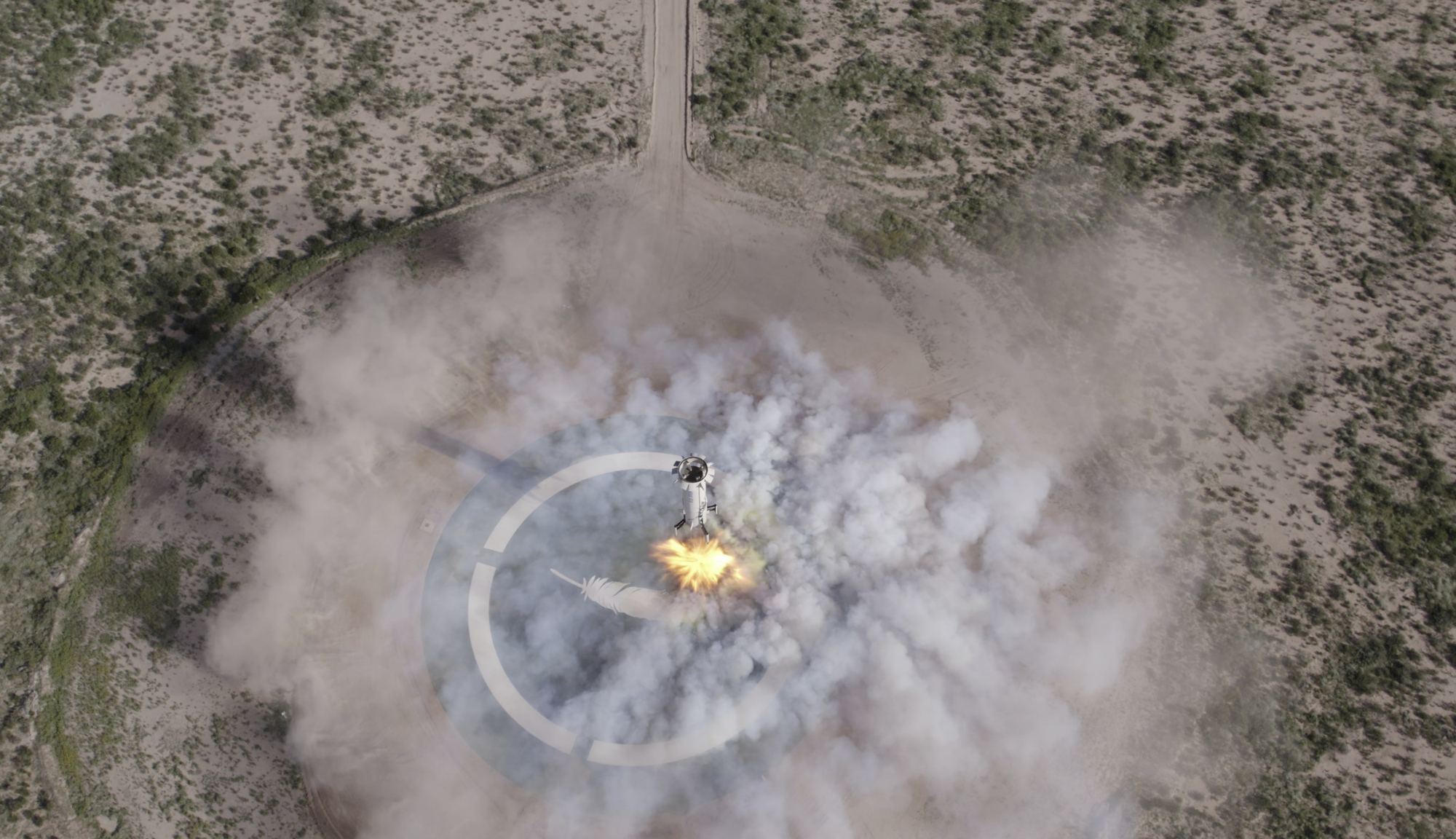Blue Origin has taken some serious steps of late to stay in the commercial space game! Ever since founder Jeff Bezos decided to step down as CEO of Amazon to focus on this brainchild of his, the company has been shaking things up and forging on ahead, hoping to become one of the most competitive and lucrative privately-owned launch services in the world. From the launchpad to the courtroom, they are making their presence felt.
Earlier today, the company completed its 17th mission (NS-17) with the New Shepard launch vehicle, a reusable vertical-takeoff and vertical-landing (VTOL) crew-rated launch vehicle designed to bring small payloads and crews to suborbital altitudes and back again safely. This was also the 8th consecutive time this particular vehicle successfully launched and returned to Earth while carrying some interesting science experiments.
As Blue Origin CEO Bob Smith said in a press release issued at 9:45 AM CDT (10:45 AM EDT; 07:45 AM PDT), shortly after the successful conclusion of the mission:
“After flying more than 100 payloads to space on New Shepard, today’s 8th flight of this vehicle carried NASA-sponsored and commercial experiments, including the second flight of NASA’s lunar landing technology that will one day allow us to further explore the Moon’s surface. We are grateful to NASA for partnering with us once again on this experiment, and we are proud of the Blue Origin team for executing a great flight in support of all our customers.”
The payloads for this mission included the Deorbit, Descent, and Landing (DDL) Sensor Demonstration, which flew with Blue Origin as part of a NASA Tipping Point partnership supported by NASA’s Flight Opportunities program. This was the second time the DDL technology demonstrator flew on the exterior of New Shepard’s booster, testing technology designed to achieve precision lunar landings without a pilot.
The purpose of this experiment is to validate technologies that will allow for resupply missions to the lunar surface using rapid automated vehicles. Another important payload was the Modal Propellant Gauging (MPG) experiment designed by principal investigator Dr. Kevin Crosby – who is also the Director of the Wisconsin Space Grant Consortium – and his team from Carthage College.
By refining PSM technology, which measures fluid mass under varying pressure conditions (caused by weightlessness and microgravity), researchers aim to increase the accuracy of propellant measuring in space. This is critical to mission performance, especially during engine burns and during the late stages. There was also the Orbital Syngas/Commodity Augmentation Reactor (OSCAR) Trash-to-Gas payload, which processes trash samples into useable gases.
These include carbon dioxide, water vapor, and methane, which could create water, oxygen gas, or even propellants. The technology has the potential to reduce launch mass and the volume and mass of trash on long-duration missions and promote human space exploration. Other experiments include the Biological Imaging in Support of Suborbital Science (BISSS) provided by the University of Florida that further tested the calibration of data collection for biological experiments.

There were also the Liquid Acquisition Device (LAD-3) provided by the Southwest Research Institute (SwRI) that demonstrates how liquid/vapor interfaces behave in microgravity – which has possible applications for cryogenic propellant storage. Ordinarily, evaluating these technologies would involve sending them aboard a parabolic flight (aka. the “vomit comet”), but the New Shepard can do the same thanks to its flight profile.
As always, this consists of the booster flying towards the Kármán Line, the official boundary of space – which corresponds to an altitude of over 100 km (62 mi). The capsule is then released, and the crew and/or cargo spend the next few minutes experiencing weightlessness before the descent begins, whereupon the capsule will deploy its landing chutes and make a soft landing.
On this flight, the NS-17 mission also carried the Suborbital Triptych, a work of art by Ghanaian artist Amoako Boafo painted on an exterior panel of the crew capsule (shown above). The Triptych is the first in a series of commissioned artworks that will fly aboard the New Shepard as part of an initiative called Uplift For Good, which aims to ensure that our forays into space bring attention to charitable organizations and efforts here on Earth.
Launched by Uplift Aerospace in partnership with Blue Origin, this initiative will send three works of art to space on three removable composite panels of Blue Origin’s New Shepard rocket. This mission also carried thousands of postcards provided by Club for the Future, the Blue Origin foundation dedicated to inspiring future generations to pursue careers in the STEM fields.

Another major accomplishment of this flight was how it further validated Blue Origin’s capacity for reusability, an essential part of Bezos’ vision of reducing costs and increasing accessibility to space. By conducting multiple flights using previously-flown boosters, the company is also demonstrated the capacity to conduct regular “space tourism” flights, which is an essential part of Bezos’ long-term business plan.
Said Christopher Baker, a program executive with NASA’s Space Technology Mission Directorate (STMD) at NASA Headquarters:
“This kind of iterative flight testing is exactly what Flight Opportunities is designed for. Leveraging a range of different vehicles to advance technologies quickly is important not only to achieving NASA’s mission goals but also to maximizing the impact of these innovations in space and here on Earth.”
Further Reading: NASA, Blue Origin


“From the launchpad to the courtroom, they are making their presence felt…”
lol.
And if the stacked their lawyers and lobbyists under their flying phallus they could probably reach orbit.